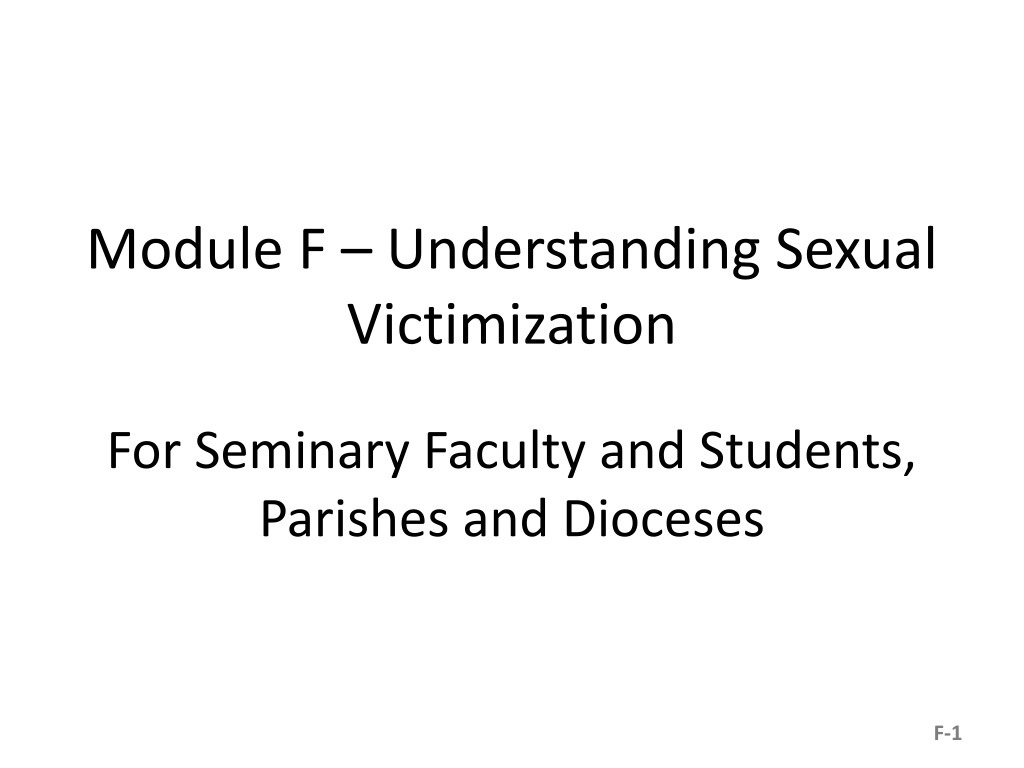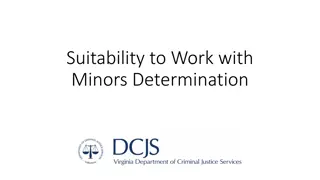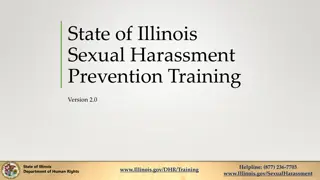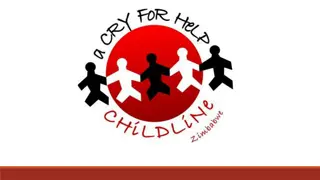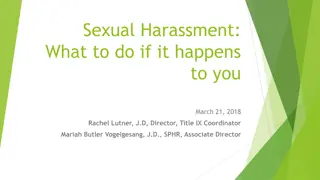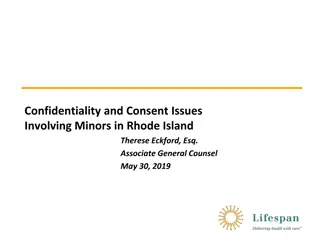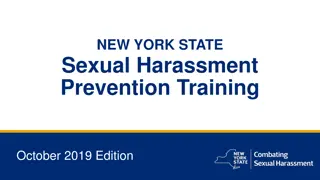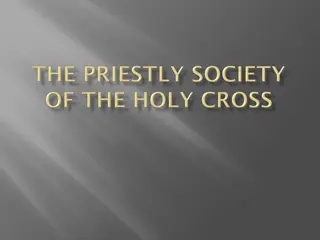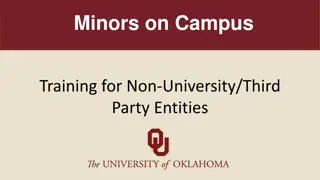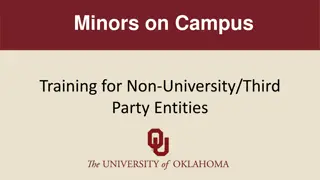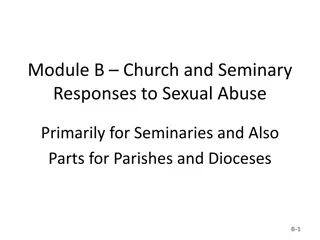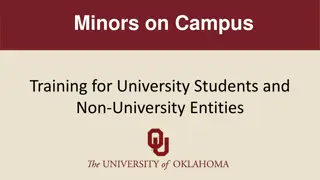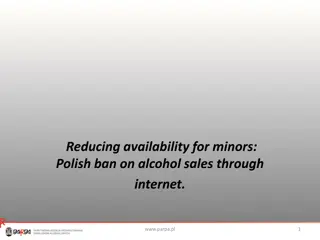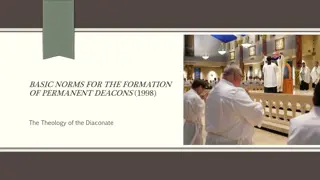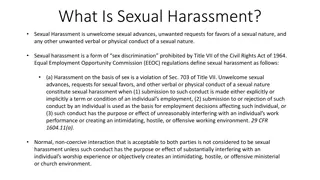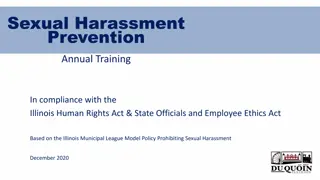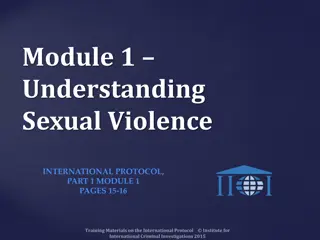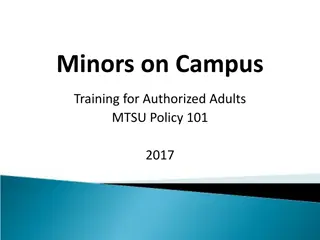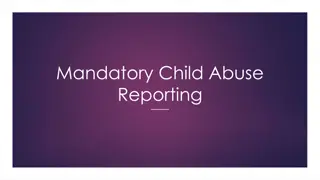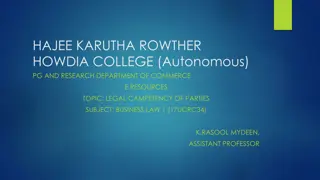Sexual Victimization of Minors by Priests: Insights and Prevention
This informative module explores the sexual victimization of minors by priests, providing data on the victims' demographics and the onset of abuse. Factors contributing to priest-abusers' behaviors are discussed, along with insights into preconditions and relevant factors. Understanding these aspects can guide efforts towards prevention and support for victims.
Download Presentation

Please find below an Image/Link to download the presentation.
The content on the website is provided AS IS for your information and personal use only. It may not be sold, licensed, or shared on other websites without obtaining consent from the author. Download presentation by click this link. If you encounter any issues during the download, it is possible that the publisher has removed the file from their server.
E N D
Presentation Transcript
Module F Understanding Sexual Victimization For Seminary Faculty and Students, Parishes and Dioceses F-1
Understanding the Sexual Victimization of Children F-2
Main Sources of Data Reports presented to the United States Conference of Catholic Bishops by the John Jay College Research Team, The City University of New York* The Causes and Context of Sexual Abuse of Minors by Catholic Priests in the United States, 1950-2010, March, 2011 The Nature and Scope of Sexual Abuse of Minors by Catholic Priests and Deacons in the United States, 1950- 2002, February 2004 * The two reports are based on data supplied by 97 percent of U.S. archdioceses and dioceses on all clergy accused of sexual abuse of minors F-3
A. Sexual Abuse Victims Who Were the Minors Abused by Priests? Gender: Male = 81% Female = 19% Age: Under 10 = 22% 11 to 14 = 51% 15 to 17 = 27% F-4
B. Onset of Sexual Abuse Preconditions for Abuse Factors in the Life of the Priests Who Abuse Overcoming External Factors that Might Have Prevented Abuse F-5
Onset of Abuse, 1: Preconditions The motivation to sexually abuse, for example, emotional congruence, sexual arousal, or blockage to normal sexual relationships The ability to overcome internal inhibitions The ability to overcome external factors that may prevent the abuse The ability to overcome the child s resistance to the abuse F-6
Onset of Abuse, 2: Relevant Factors for Priests Priest-abusers were likely to have experienced some of the following: Poor relationships with their parents when they were youths A history of sexual abuse Isolation, loneliness, insecurity, poor social skills, lack of identity Confusion over sexual identity, psychosexual immaturity Alcohol abuse F-7
Onset of Abuse, 3: Overcoming External Factors that May Prevent Abuse from Occurring Abusers often create opportunities for the abuse to take place, such as socializing and building trust with the victim s family Abusers must overcome the child s resistance to the abuse, which is generally achieved through grooming tactics such as disproportionate attention, enticements, games, seduction, verbal and/or physical coercion F-8
C. Grooming Behavior Grooming is a pre-meditated behavior intended to manipulate a potential victim into complying with sexual abuse Examples of various tactics or methods used to entice victims: seduction or manipulation building of personal and family relationships providing benefits such as drugs, alcohol, or pornography, money, or other gifts, tickets to sporting events, or taking them on trips verbal or physical intimidation F-9
Grooming 2, Seduction and Testing of a Child This tactic is used when there is a relationship with a child and the child is accustomed to the affectionate expression of the offender The offender gradually extends the affectionate behavior, all the while testing the child s response; if no overt resistance is observed, the sexual abuse continues F-10
Grooming 3, Emotional Manipulation and Verbal Coercion These were the most common tactics used by offenders to groom their victims. Examples: Doing favors for the victim in exchange for sex Emotionally blackmailing the victim into compliance Even though it may appear that there is room for negotiation on the part of the victim, the outcome always favors the offender
Grooming 4, Catching the Victim by Surprise The offender orchestrates a situation to distract the victim or seizes the opportunity to abuse when the situation occurs A frequent situational opportunity arises when potential victims become altar servers or otherwise serve a role in the church Seizing the opportunity is most common and is usually the result of the offender s frustration from waiting for the right time to initiate contact F-12
Grooming 5, Using Verbal or Physical Force The offender garners victim compliance through use of force The offender either commands the victim to perform sexual acts and/or physically forces the victim to engage in sexual acts Physical force is one of the least common grooming tactics; this factor is more common among the most serious, repeat offenders F-13
Grooming 6, Disguising Sexual Advances This tactic disguises sexual advances in the context of playing a game. Example: Offender will begin by tickling the victim and gradually progress to fondling While this approach may appear spontaneous, it has been well planned by the offender, yet orchestrated in a rather surreptitious manner F-14
Grooming 7, Using Alcohol and Drugs During the peak years of abuse, the use of alcohol and drugs by abusive priests increased significantly, but only for male victims Why this finding is important: It is used to lower the inhibitions of the potential victim The increase in the use of alcohol and drugs by the abuser is consistent with the increase in the abuse of males The increase in the abuse of males is consistent with the increase in the abuse of minors by priests The use of alcohol and/or drugs by the abuser is a feature of the situational or regressed child abuser, but not of the fixated abuser F-15
Grooming 8, Building Relationships with the Families of Victims Family relationships were built to gain trust Parents of abused children trusted the priests without reservation The children who were abused often accepted the abuse and did not report it for many years This lack of disclosure and fear about reporting the abuse was one reason it was able to persist F-16
Grooming 9, Effects of Grooming over Time Grooming tactics are premeditated and more methodically planned than spontaneous abuse The offender is willing to wait months or even possibly years to accomplish his task Eventually the victim can become groomed to the point that he/she believes to be in an apparent loving relationship with the offender Non-violent forms of extensive grooming or persuasion make it difficult for a victim to understand that the actions are abuse F-17
D. Persistence of Abuse The accused priests employed a variety of justifications and excuses to protect themselves from self-blame and from accepting the status of abuser Techniques of neutralization were rooted in culturally specific motives unique to the Catholic Church F-18
Persistence of Abuse: Categories Mechanisms used to alleviate feelings of guilt and shame, thus enabling offenders to commit acts of abuse, are called neutralization techniques Three categories: Excuses for behavior Justifications for behavior Deviance disavowal F-19
Excuses for Behavior, 1: Denial of Responsibility Accused priests denied responsibility by making claims that They were not well (using or addicted to substances such as alcohol and/or drugs) They were compelled by sick or sinful impulses Forces beyond their control allowed them to deny full responsibility for their behavior, similar to legal claims of diminished capacity F-20
Excuses for Behavior, 2: Denying the Victim Accused priests denied the victim his or her status by claiming that the victim Participated by being seductive or precocious, or Did not fight back or say anything during the abuse Accused priests blamed the victim or the victim s family for setting up conditions that allowed the abuse to occur by inviting him into their home, engaging him socially, and including him as part of the family F-21
Excuses for Behavior, 3: Denying the Victim Accused priests explicitly blamed victims by placing the onus of the initiation of the physical intimacy on the accuser Referred to the abuse as a relationship Noted that the victims were willing or precocious Considered themselves the victims because they were accused of these indecent acts F-22
Justifications for Behavior, 1 Accused priests justified their actions by Diminishing the wrongfulness of the behavior Deflecting the harmfulness of the actions Placing the responsibility for the deviance on others, sometimes actually condemning the condemners or criticizing their accusers Accused priests downplayed what actually occurred or used positive language surrounding the relationship between themselves and the victim F-23
Justifications, 2: Minimization of Harm Many priest-abusers explained their actions as being part of a relationship, not sex, or that it happened only once, or occurred long ago Viewed the sexual behavior as consensual, not harmful, and any behavior short of intercourse as not wrong because it was not sex Insinuated that a single incident of sexual behavior was not harmful; only repetitive acts caused harm Implied that the harm should be forgotten because of the time between the incident(s) and the accusation F-24
Justifications, 3: Condemning the Condemners This behavior is a deflective technique in which priest-abusers blamed church leaders for the abuse and/or the responses to the accusation One way of shifting the blame to the church hierarchy was to say how poorly church leaders prepared seminarians for life in the priesthood They also blamed church leaders for how ineffectively they dealt with accusations of abuse, which they considered reactive and unforgiving F-25
Justifications, 4: Condemning the Condemners This form of justification draws on the culture of forgiveness: accused priests noted that the Catholic practice of reconciliation should outweigh the sins and no one should take action against them in response to allegations This view essentially eliminated the penance aspect of reconciliation; some priests stated that public embarrassment was sufficient penance This attitude was particularly true for those who participated in psychological treatments, but were still removed, or served jail time F-26
Justifications, 5: Condemning the Condemners Some clergy accused of sexual abuse believed that the 2002 Charter for the Protection of Children and Young People created a negative attitude particularly because of the zero-tolerance policy for those accused of abuse Abusers felt they were denied due process They believed that if only their leaders had done things differently in the past, this crisis would have been avoided In particular they felt they were poorly socialized to the life of a priest F-27
Justifications, 6: Inadequate Seminary Preparation Accused priests indicated that had each man been adequately trained to undertake priestly life, they may have been able to make better choices, for example They may not have chosen to be ordained, but in some way felt pressured They might have been better equipped to adjust to the loneliness and realities of the life of celibate chastity, though no priest said that the vow of celibate chastity was the actual problem F-28
Deviance Disavowal: Appealing to a Higher Authority Accused priests believed that a sin or infraction must first be mended with a higher authority, that is, the authority of God Their particular focus was on relationship with God; through the sacrament of reconciliation the slate would have been wiped clean of sin They may have sought forgiveness also from parishioners and victims, or completed some distinct punishment or treatment and therefore that should be enough to end the process of condemnation However, they failed to recognize any harm to the victim F-29
E. Desistance from Abuse, 1: Why Abuse Stopped Desistance from abuse is affected by both internal and external influences Some priest-abusers stopped because of internal reasons Feeling guilty about their behavior Having a sense of remorse Feeling shame because of their behavior F-30
Desistance from Abuse, 2: Why Abuse Stopped More commonly, abuse stopped because of external reasons being removed from the parishes and situations in which they could abuse Others stopped because of a combination of internal and external reasons they earned a disgraceful reputation because of their behavior they were reformed after treatment F-31
Summary of Understanding the Sexual Victimization of Children Age and Gender of Abuse Victims Onset of Sexual Abuse Grooming Behavior Persistence of Abuse Excuses for Abuse Justifications for Abusing Deviance Disavowal Desistance from Abuse F-32
Discussion Questions What are some of the relevant factors to be aware of at the onset of abuse? How can those responsible for the care of children and young people be made more aware of the characteristics of grooming behavior and how to respond? How do the excuses and justifications for sexual abuse affect the persistence of the behavior? What are some other ways supervisors can more readily detect abuse? Link to USCCB http://www.usccb.org/issues-and- action/child-and-youth-protection/charter.cfm F-33
Prepared by: Sister Katarina Schuth, O.S.F., St. Paul Seminary School of Divinity, University of St. Thomas Technical Associate: Catherine Slight Consultants: Dr. Karen Terry and Margaret Smith, John Jay College of Criminal Justice, authors of major studies on sexual abuse for the USCCB; Dr. Mary Gautier, Center for Applied Research in the Apostolate F-34
